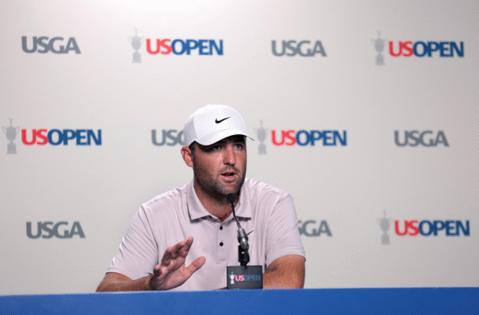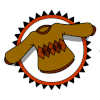Paul Zeise: Scottie Scheffler missed the cut in his first US Open at Oakmont. That pushed him to the top of the golf world.
Published in Golf
PITTSBURGH — Scottie Scheffler’s first U.S. Open was in 2016 at Oakmont Country Club. He was an amateur, mostly an unknown. He was in awe of Dustin Johnson and Brooks Koepka, whom he got to play a practice round with. Scheffler missed the cut.
At that point, nobody outside of some golf insiders really knew who he was, and certainly very few of the 30,000 or so who attended that event — won by Johnson — cared that Scheffler was on his way home Friday evening.
My, how things have changed for him over the past nine years. He is now the No. 1 player in the world and the odds-on favorite to win this thing, and if he isn’t golf’s biggest star right now, he is on the extremely short list of candidates.
Scheffler has three major victories in his career but has not yet won the U.S. Open. That doesn’t mean he is in the “best player to never win this major” category, as this only his sixth start at the U.S. Open as a professional golfer and he is only 28 years old.
He has indeed dominated golf this year, though, as he has three wins, including the PGA Championship, and he finished fourth at the Masters. He is playing some of the best golf of his career, and what should scare the heck out of the rest of the field is he is still probably on the upswing and only likely to continue to get better.
The funny thing is one of the most important experiences he had toward his success was failing at the U.S Open right here at Oakmont in his first try nine years ago. Scheffler was an amateur. It was his third event on the PGA Tour, and he entered the tournament with all of the optimism of a young, up-and-coming golfer can be expected to have.
He believed he was going to make the cut and when he shot 69 on the first day, he thought there was no way he would miss it. But the second day brought him back to reality, as he shot 78 and missed the cut by one stroke.
“I played a practice round with Dustin and Brooks, felt like I learned a lot from those guys at the time,” Scheffler said. “It definitely made me excited to get out here for real because it was a pretty fun week. Obviously I had a pretty good first round, didn't play as good in the second. That was a tough pill to swallow, missing the cut by one.
“But what I really remembered was coming back the next year and I think I made a putt on 18 to get into a playoff in qualifying, ended up getting through the playoff and qualifying and coming in, finishing low [amateur]. That was something I kind of marked on my calendar, something I wanted to get back and try to do because I was pretty disappointed the way it ended for me here nine years ago. So it was nice to come back and have a better week the next year.”
Scheffler has had plenty of better weeks than his first trip to Oakmont for the U.S. Open in 2016, and as the No. 1 player in the world this time around, he is the favorite to win it and the pick of most of the experts to be the last man standing at the end of what is surely going to be a grind.
Oakmont Country Club is a notoriously tough golf course, even for the best golfers, and this week, here has been plenty of talk about just how thick the rough is. Scheffler said he doesn’t feel any extra pressure as the favorite — he has been the No. 1 golfer in the world for more than 100 weeks, so he is used to it — but he does know Oakmont is capable of humbling even the best players in the world.
“I'd say there's definitely a strength factor coming out of the rough,” he said. “This golf course, there's not many trees out there, but there's so many bunkers, I don't really know if this is a golf course you can necessarily just overpower with kind of a bomb and gouge-type strategy, especially with the way the rough is. You have to play the angles. Some of the greens are elevated; other ones are pitched extremely away from you.
“There's certain holes where you'll get — like [Nos.] 3 and 4, you've got the church pews on the left and then you get to some of the holes on the back. Like 14's a short hole, but the bunkering is just one after another of walled bunkers. There's not really many areas where you step on the tee box and you're like, ‘Hey, I can miss it right here. Hey, I can shade towards the left side of the fairway because right is really bad.’ ”
Scheffler then proved he is probably closer to those of us who are weekend hackers when he was asked how players will navigate the rough and what it means if you get into the rough. He basically gave out some free advice that, again, weekend hackers probably should heed regardless of what course they are playing.
“Actually, if you hit it in the right rough, you're probably not going to get it to the green; if you hit it in the left rough, you're probably not going to get it to the green,” Scheffler said. “So might as well try and split the difference there and hit it in the middle.”
It sounds so simple because it is — well, at least in theory — but it isn’t that simple given all the factors at play at Oakmont. That includes the fact a player can hit his ball “in the right place” and it can still roll into the rough or one of the sand traps. Scheffler said his approach at Oakmont this week will be “most holes, a par is a good score,” but there are a few he said players will have a real chance to make a birdie.
One that is definitely not on that list of birdie holes is the much-talked about 290- to 305-yard (depending on where the tee is) par-3 eighth hole. Most of the players have openly talked about how it is too long for a par-3 and how it can play really tough if you miss the green in the wrong place.
Scheffler said his approach is going to be to use either his 3-wood or driver (depending on distance and wind) and hope to get on the green and two-putt. That hole is actually symbolic of the kind of strategy needed to handle Oakmont, as it is a mental and physical grind and simplicity is usually the right play.
One of the funny stories from 2016 was Scheffler’s first round, when he shot 69, came with the backdrop that he wasn’t as focused on golf as he was to get off the course and watch an NBA Finals game. He said that won’t be the case this week because he was younger then, that Finals featured Stephen Curry against LeBron James and he is a little soured on the NBA right now because his beloved Mavericks traded away Luka Doncic.
But he does have a little more on his plate to distract him now, as he has since gotten married and he and his wife had their first child last year. He said he doesn’t view that as a distraction, but it obviously has changed some things about his approach and his schedule.
“I've always been the guy that I think works the hardest. And if something is not the way that I feel like it should be, I'm going to go out there and figure it out, and that's just kind of how I've always approached things,” Scheffler said. “Early in my career, I was able to come out to courses and spend as much time as I wanted to out here, and that's just because I didn't really have any other obligations. I'd just come out and practice, practice, practice and do whatever I wanted to do, but now things are a little bit different with having a wife and a son and some other obligations at tournaments, as well.”
©2025 PG Publishing Co. Visit at post-gazette.com. Distributed by Tribune Content Agency, LLC.







Comments